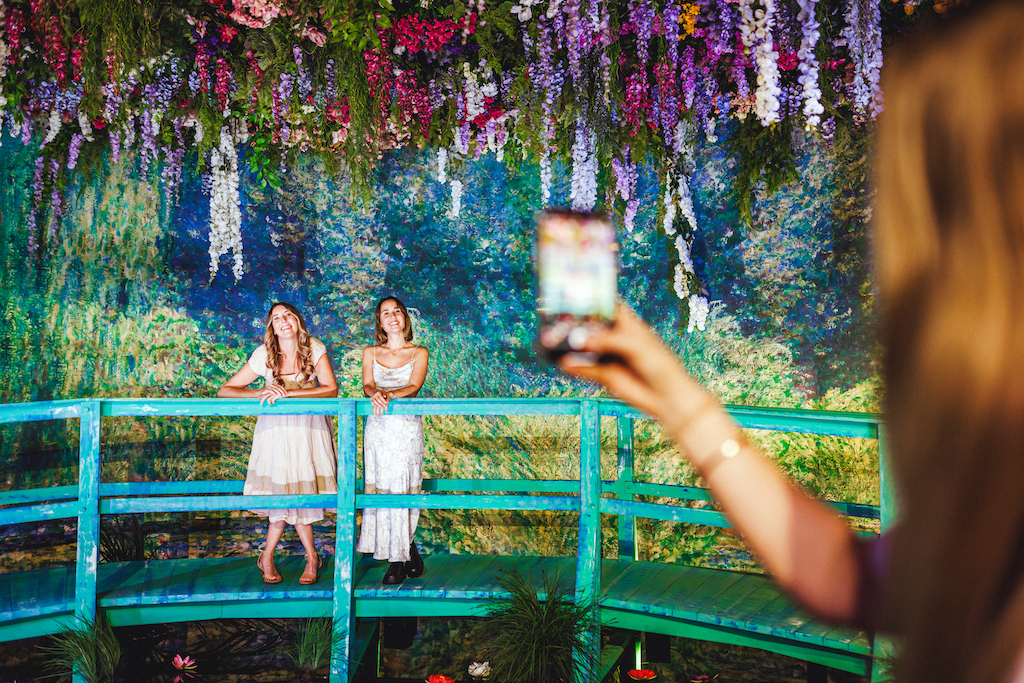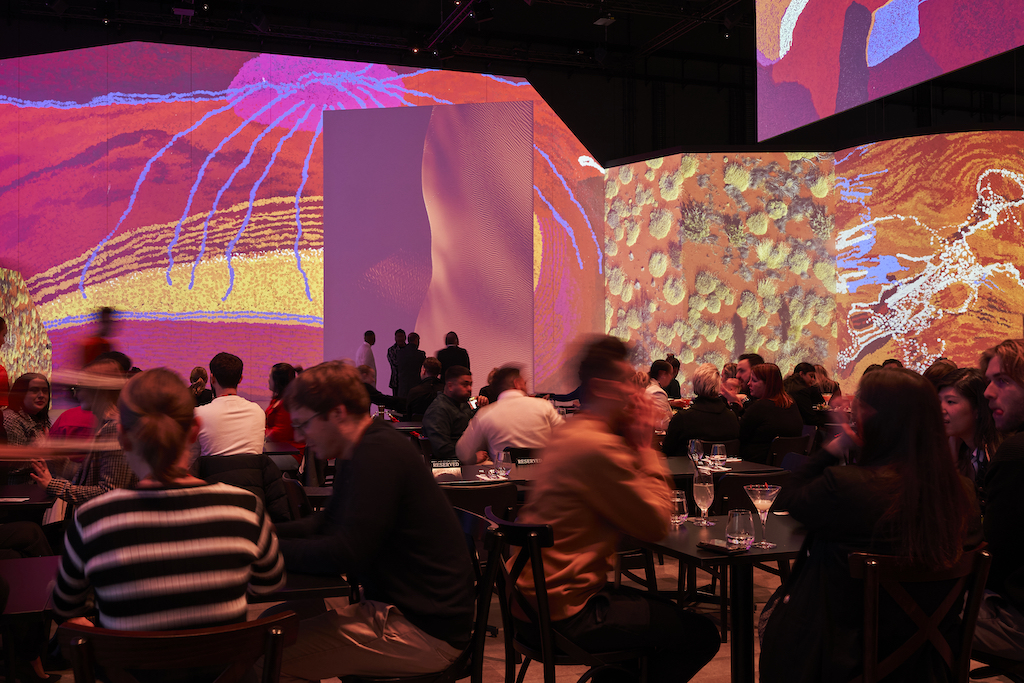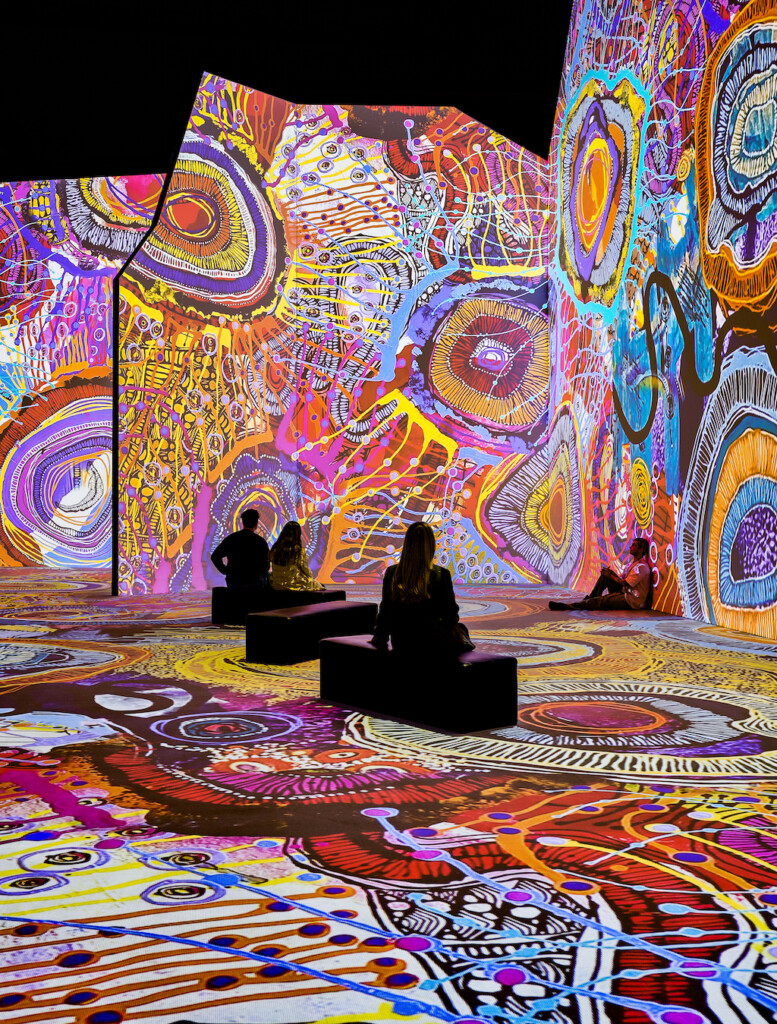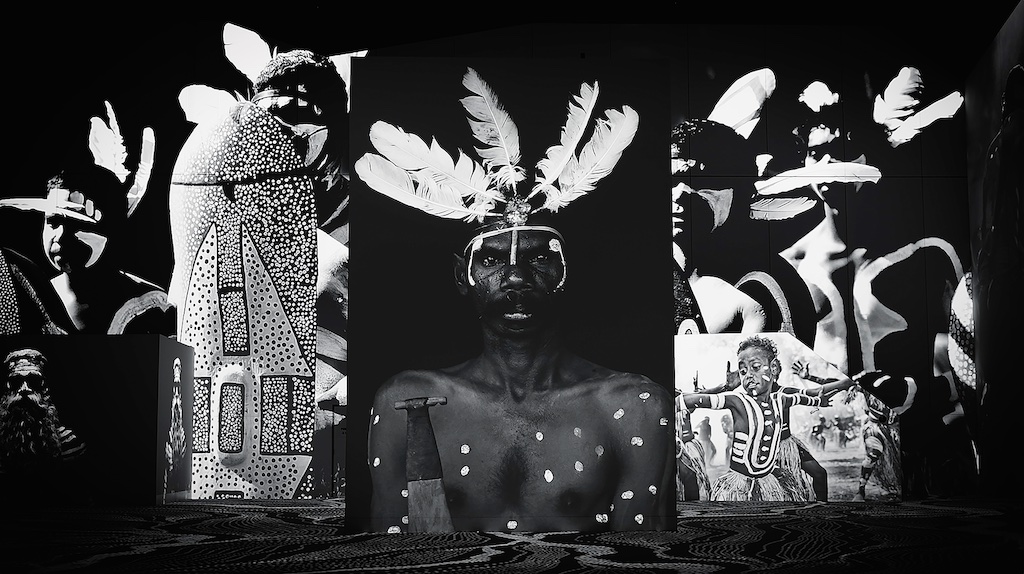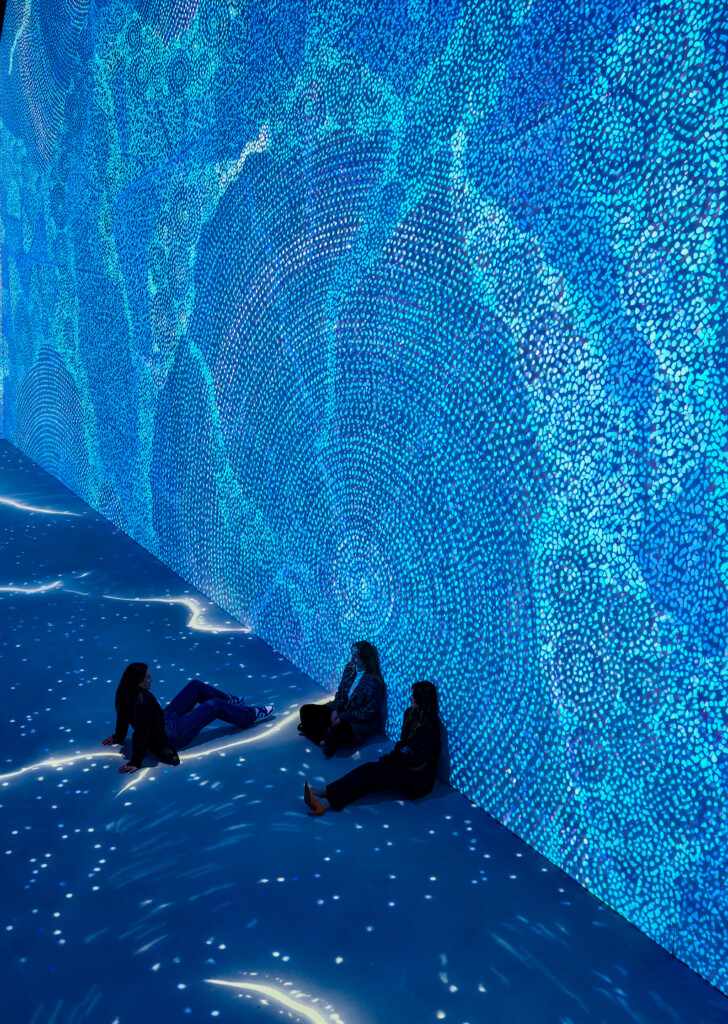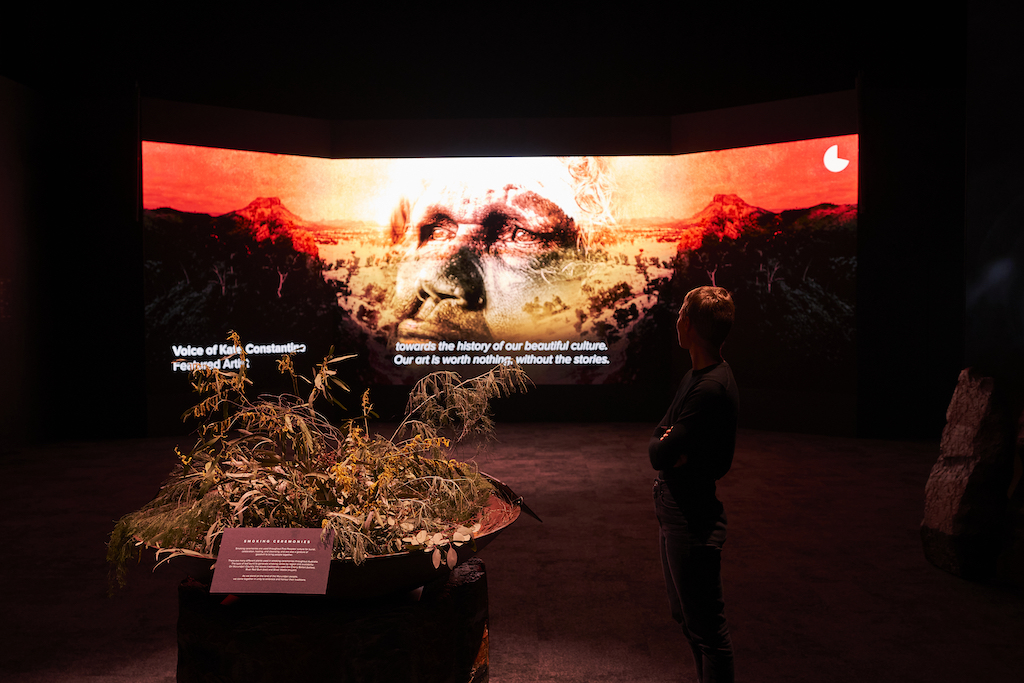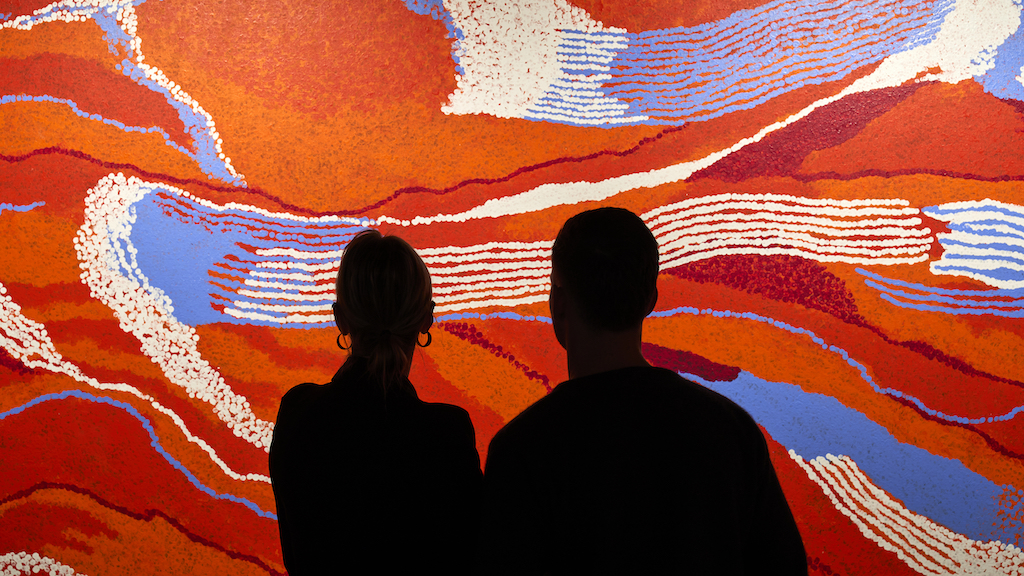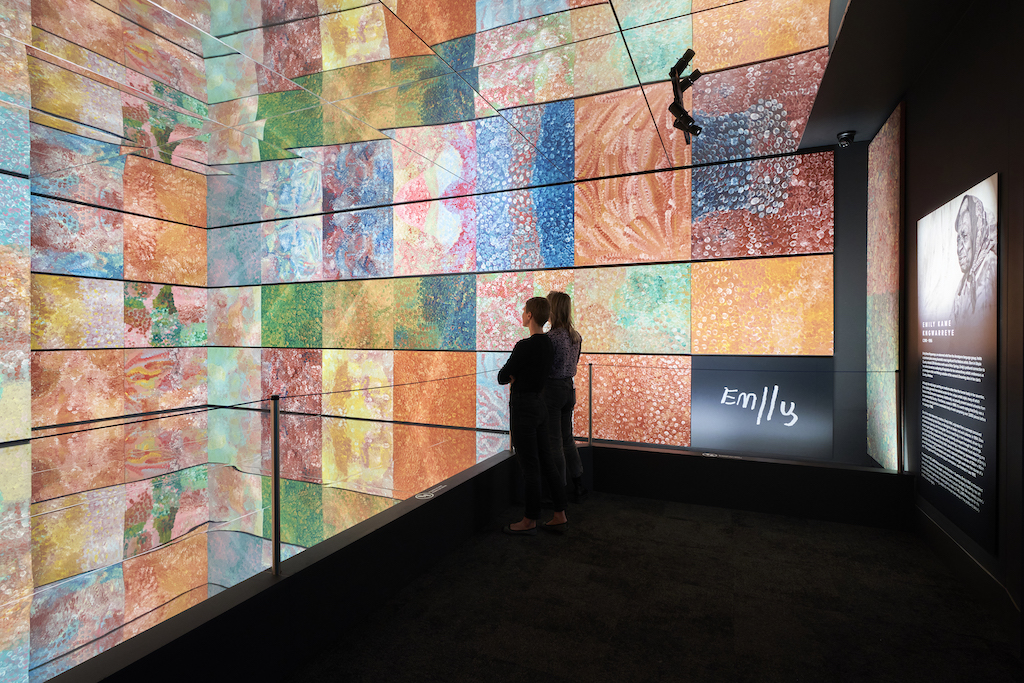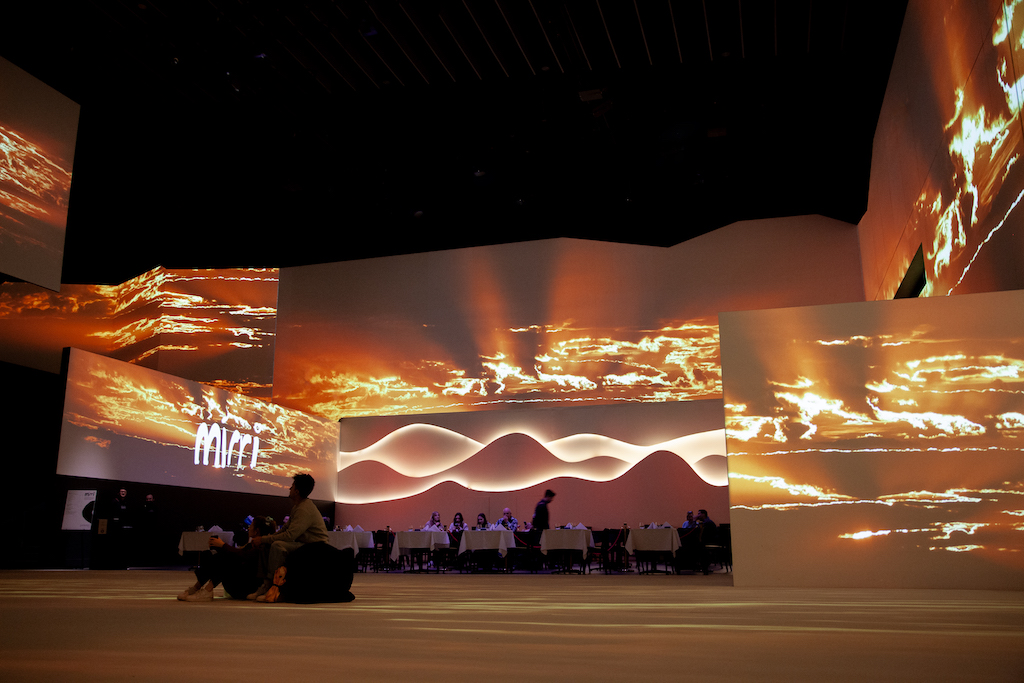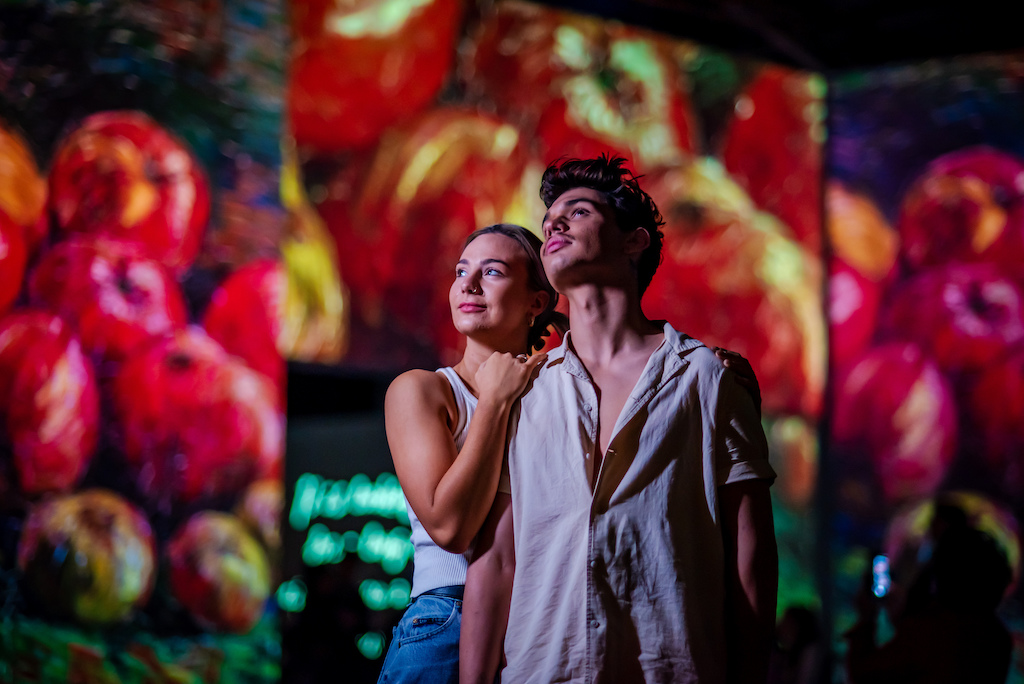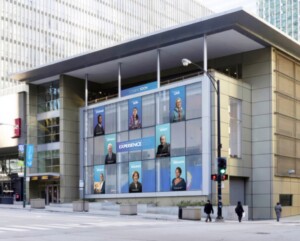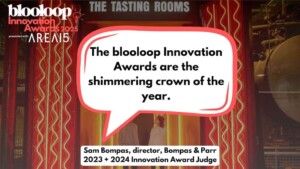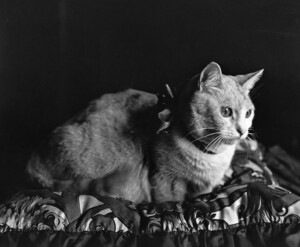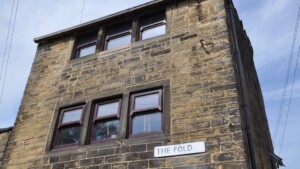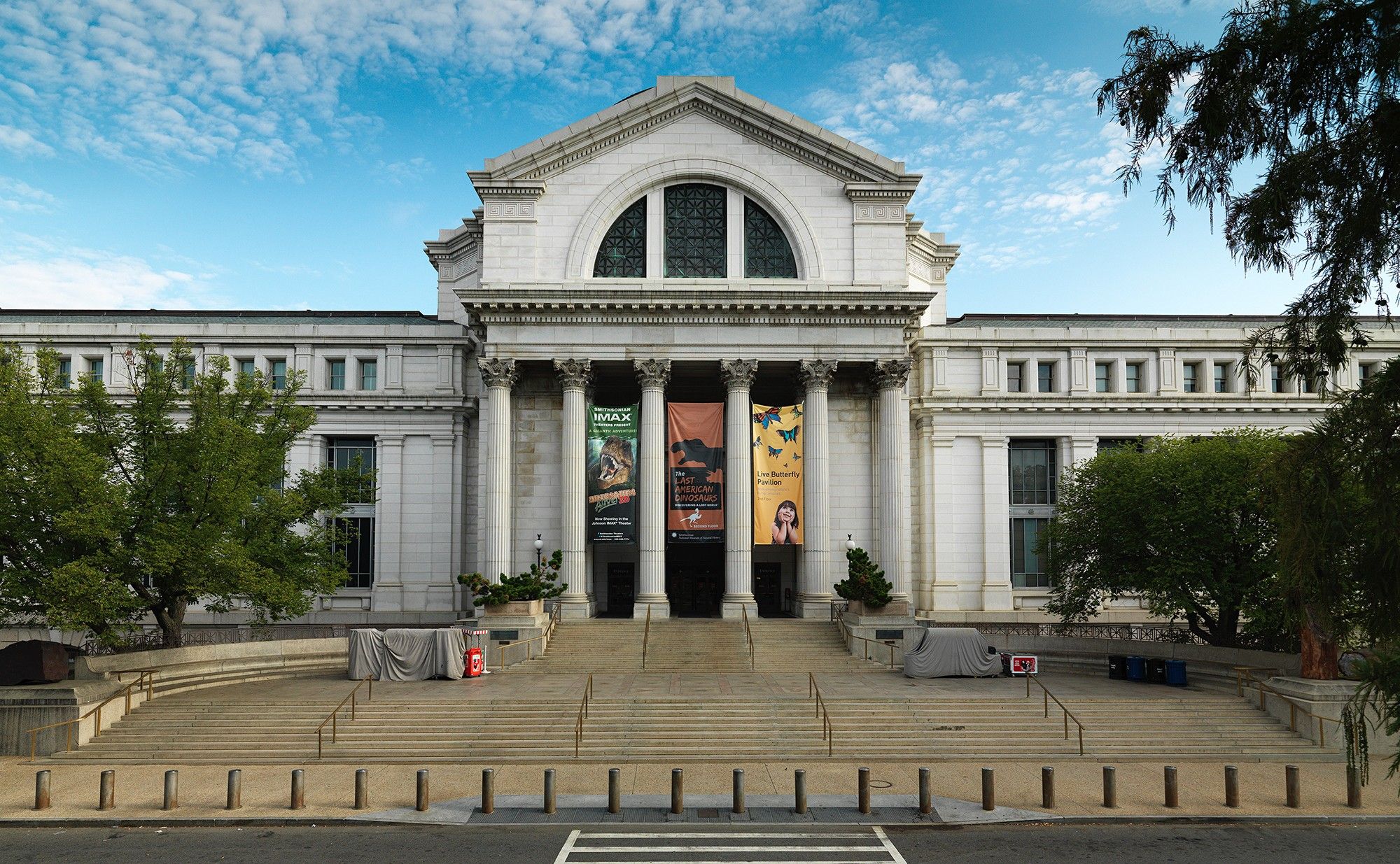Grande Experiences, a leading global arts and culture immersive experience company, recently reached a significant milestone with the opening of its 250th display. On 23 June, Connection – Breathtaking Stories through First Nations Art & Music opened to the public at THE LUME Melbourne.
The company began in 2006 and has since reached more than 23 million visitors around the world with its unforgettable immersive experiences, such as Van Gogh Alive, Da Vinci Alive, Monet & Friends Alive, Dali Alive, Street Art Alive and Italian Renaissance Alive, as well as Planet Shark. These have been shown in over 180 cities and translated into 33 languages.
Over the last 17 years, Grande Experiences has established itself as one of the world’s most successful and innovative immersive experience companies. The opening of its 250th display is a testament to the company’s commitment to excellence and innovation.
To gain more insight into what drives Grande Experiences and to find out more about Connection, blooloop speaks to founder and CEO Bruce Peterson and head of creative experiences, Gary Moynihan.
Engagement is key
Peterson previously worked as a teacher before founding Grande Experiences. It is the lessons that he learned in that career that inform the company’s emphasis on visitor engagement.
“Grande Experiences started in 2006 as an artefact-based exhibition company. When we were in Italy developing our first exhibition and making the Leonardo da Vinci exhibition into what it is today, I could see a movement of disengagement with visitors.”
Peterson, who had three young children at the time, noticed that his kids were not engaged with museum experiences. Looking around he realised that many other visitors were not engaged either.
“It was around the time that smartphones were coming out; there was more competition for people’s attention. As an ex-teacher, I knew that if we wanted to educate, we had to engage. And to engage, you must entertain. In view of this, we wanted to develop a type of multimedia-based exhibition that no one had ever created before.
“It took us two years to develop the technology and tourability, and we put that first experience on at the ArtScience Museum in Singapore in 2011. So, we really pioneered this whole movement of touring immersive experiences. Then, in 2017/2018, we introduced multi-sensory elements. We looked at how your kinaesthetic sense of space, audio, visual, taste, touch, smell and all those things synchronised together.”
Grande Experiences has also built a 3000-square-metre multi-sensory digital art gallery, THE LUME Melbourne, to serve as a permanent flagship venue. This opened in November 2021. It is the world’s largest digital art gallery, with 150 HD projectors shooting at four storeys high and a 99-channel spatial audio system.
“Fast forward to today, THE LUME Melbourne is hosting our 250th exhibition, which we’re extremely proud of.”
What makes Grande Experiences unique?
The company has been producing shows for 17 years, and while immersive experiences have become a huge trend in recent years, it isn’t just Grande Experiences’ head start on the competition that makes the company unique, as Moynihan explains:
“We are centred around storytelling. So, a big part of our methodology and our approach to projects is about how we craft a story, and how we communicate with and engage audiences. We’re not just a production or AV company; we start with the visitor and the story in mind.”
All the technology and tools that Grande Experiences uses are just ways of delivering that story, he adds:
“At the core of what we do is the timeless act of storytelling. A vital part of that act is the technology used to deliver the story, and how it impacts the visitor’s emotional response. We’re constantly researching and investing in the latest innovations to give the visitor an unforgettable experience.”
Another factor, says Peterson, is Grande Experiences’ talented in-house teams:
“One of the things that makes us unique is that we have an in-house creative team, we have an in-house production team, and we own all our equipment. This provides us with a real competitive and quality edge.”
In-house expertise
Building on this, Moynihan says that having in-house skills has been critical in Grande Experiences’ success, for several reasons:
“First and foremost, we’re capturing the learnings all the way through. That means we have been able to develop our own best practices and standards in-house. That’s something that I’ve been very keen to drive here, that productivity that we can get out of learning from experiences.
“The more we do, the better we get at it, and the more command over the medium we have as a result.”
There is also a shared knowledge:
“There’s a real element of learning from peer to peer in a team like this. That allows us then to scale up a team as well. When we bring a new person on, there’s an existing knowledge base within the business, so no one needs to start from scratch again. So, we can onboard designers quickly and bring them up to speed with the nuances of what we do.
“The team works very closely, we’re attached to projects for long periods so when we move into pre-production and production phases, the same team will be intimately involved in that project until completion. The projects themselves are a big attraction for a lot of people coming to work for us as well. It’s a real selling point in terms of attracting talent into the business, this opportunity to work on some amazing cultural projects.”
Connection
In June 2023, Grande Experiences opened Connection – Breathtaking Stories through First Nations Art & Music at THE LUME Melbourne. This features more than 550 images from traditional and contemporary Australian indigenous artists, celebrating the oldest living art and culture in the world. The artwork is projected onto the walls and floor and is also animated and synchronised to a contemporary Indigenous musical score for a fully immersive experience.
“Connection is a combination of original art and multi-sensory experiences,” says Peterson. “When a visitor first arrives, they are welcomed by some of the artists, who talk about their art and their relationship to Country. They go through a smoking ceremony, and then they enter the huge multi-sensory gallery.”
Guests can step inside the works of Australia’s most celebrated established and emerging First Nations artists. Connection brings to life the work of Emily Kame Kngwarreye, Tommy Watson, Sarrita King, Kate Konstantina, Wayne Quilliam and more, alongside a soundtrack of Indigenous artists.
Highlights include a 360° digital art play space, and a mirrored infinity room installation by renowned artist, Emily Kame Kngwarreye, called Emily’s Wall.
“We also have a café/restaurant where guests can enjoy their themed culinary delights while actually inside the experience,” adds Peterson. “All the food and beverage that we serve is inspired by Indigenous culture and there’s an extensive retail area. Visitors can also view a gallery of original, physical artworks by First Nations artists featured in Connection. Guests can purchase the artworks, with royalties benefiting the artists and their families.”
A Spotlight on First Nations art
Connection was something that the company felt compelled to create, says Peterson:
“The Indigenous First Nations peoples are the oldest continuous living culture in the world. There are First Nations rock paintings dating back 65,000 years. But the art had never been represented in a full experience. There have been single artists or regions on display, but nobody had ever pulled together art from across Australia and the Torres Strait Islands.”
Moynihan adds that the team wanted to create something that no one else could, drawing from Grande Experiences’ knowledge and location:
“We wanted to take Indigenous art and culture and share it with the world. Our format can democratise access to art that isn’t often in the spotlight.
“In addition, we wanted to build on the growing appetite for genuinely authentic experiences. Audiences are more sophisticated now, so the bar is much higher than it was. People want more than just eye candy. We can create something that engages the artists, displays physical artwork within the experience, and features footage that we’ve gone on location to shoot specifically for the experience.
“All these things combine to create a bigger overall experience that is authentic all the way through. There are no shortcuts taken.”
Grande Experiences works with Indigenous artists
Peterson says that Connection is a critically important experience at a key time in Australia’s social history:
“We see this as a new way for all non-indigenous Australians to learn more about First Nations culture which has developed over 65,000 years. It is so spectacular that everybody can be proud of it, every Australian.”
For Connection to be a success, it was vital to bring in the right partners, including the Indigenous artists themselves, adds Moynihan.
“There’s something very special in Australia about Indigenous culture, but it is not given the spotlight that it deserves,” he says. “For us as an organisation, we were quite keen to change that. Indigenous experts have worked on this project with us, and we’ve brought in outside expertise to guide us.”
When you take on a project like this, you’ve got to do it right, he stresses:
“It must be beyond reproach in terms of any cultural sensitivities. For us, it was vital to get all the right people involved, remunerate all the artists and musicians, to consult properly. Our vision was to be as authentic and genuine as possible.”
Creating Connection
When it comes to creating a new immersive experience, Moynihan says that the story is the key. So, that is where the creative process for Connection began:
“We’re storytellers; that’s the first thing to consider in a project. We wanted to showcase Indigenous art and culture. But firstly we needed to think about how to bring that together, and how to create a story. We looked at different options and spent time consulting with our partners.
“We initially thought about a geographic journey where the guest travels around Australia and every region has a moment in the experience. However, we found that the artwork within each region is so varied that it wouldn’t gel as a cohesive experience.
“Then we thought, ‘What does everything have in common?’ After talking with our contributors, we arrived at three overarching themes that are pretty much present in all Indigenous artwork in Australia: Land, Water and Sky. That was the real eureka moment. We knew that would form a narrative that people can engage with.
“We also wanted to build stories within stories. For instance, with water, we were able to start with inland waterways and rivers and then move out to the big blue ocean, and bring people on that journey through the artwork.
“We could then pair the music with those themes. Music gives our experience its heartbeat, its soul. It drives the highs and lows, the dark periods and the lighter periods.”
Adding depth and meaning to the experience
Going into more detail about the artists and experts that Grande Experiences collaborated with in the creation of Connection, Moynihan explains that they brought together a curatorial panel.
“We had an expert called Adam Knight who runs Australia’s largest gallery of Indigenous paintings; he’s worked with Indigenous artists for decades. He became a great source of information and advice, and eventually a co-curator of the experience.”
In addition, the team worked with Wayne Quilliam, an Indigenous photographer who has displayed work around the world, and who has been capturing imagery of Indigenous culture for many years:
“As well as acting as co-curator, Wayne contributed a lot of his photography, which helped illustrate the narrative and give context to where the artwork was created. He also contributed portrait photography of First Nations Australians to help humanise the experience and to show it as a celebration of culture, not just artwork on its own.”
Grande Experiences also worked with the National Museum of Australia:
“Their Indigenous curator, Margo Neale, advised us closely. And we had many other contributors to the project. We have a lot of artists featured in the experience and several of them came on board to help us in some of the curatorial decisions.”
Grande Experiences: pioneering immersivity
Immersive experiences are a huge trend, with new productions popping up in cities around the world. As a pioneer in this space, Peterson says:
“It’s humbling to be copied. But also, it’s frustrating when it’s done by entertainment promoters that don’t know how to curate an exhibition and are seeking a quick buck. It’s not just about taking paintings and projecting them onto walls. Most of our experiences take over two years to create, because they feature an enormous amount of artwork and music, worked together into a storyline.”
Reflecting on what makes a truly successful immersive experience, he says:
“Everything Grande Experiences does tells a story. We think about the story behind Van Gogh, the French Impressionists, or our First Nations artists that we want to get out to people.”
“There’s a lot of eye candy out there which looks fantastic on Instagram. But it’s underwhelming in person. It captures your attention for a minute and then it’s like, ‘Okay, we’ve seen that effect now’.
“It’s all about engagement. We’re adding a little bit of theatrical entertainment to engage the audience but we’re also educating them along the way. That goes back to our purpose, which is to bring art and culture to more people. Our goal is not to replace the original art. It is to inspire more people to want to go and see the art that is in museums and galleries around the world.”
It’s about inclusiveness, he adds:
“It’s making sure that art isn’t intimidating or just for the highly educated. Art is for everyone.”
The art is the hero
While in other immersive experiences, it can feel like the technology is the star, Peterson says there is a balance to be found, where the technology enhances the experience without becoming the focus itself:
“That’s been integral to Grande ever since we started, and that’s why we have the trust of some of the world’s biggest institutions. The art must maintain its integrity, that’s the number one thing that we do.”
“The team has curatorial support from the artists to ensure that we treat the art with respect. We’re not just doing animation for the sake of animation; we’re bringing it to life to provide engagement and to help tell the story of the artists. We don’t just move images around and not care about what it does for the artwork.
“The technology is just the mechanism that we use to display the art. We’re a content creation company; we work with great artists, and we work on engaging subjects. Right now, we use projection-based technology, with aromas, audio, etc., but that doesn’t mean this will be the way it’s displayed in five or 10 years from now.
“No matter the technology or the method of delivery, the art must remain the hero.”
Grande Experiences: just getting started
Moynihan says that there is a misconception that immersive experiences are a new thing, even though Grande Experiences has created 250 displays
“Yet in some ways, as a medium and as an industry, it does feel like it’s in its infancy still,” he adds. “When we create these landmark experiences, like Connection, that advances the entire sector. That is important for me as a creative to know that we’re moving the dial on things and we’re constantly improving the visitor experience. We’re giving immersive experiences legitimacy by doing it at this standard.”
“There’s a heart and soul to what we do. What we’re putting out in the world makes a difference.
“For instance, we featured many artists and musicians in Connection. Some of them are deceased, and some are young, contemporary artists. Sarrita King said that, for her, one of the joys of being part of Connection was that she has her work displayed alongside the Old Masters of Indigenous art in Australia. That is one of the powers of immersive content, we can merge eras and generations.
“250 experiences sounds like a lot – and it is – and it’s something we’re very proud of, but also, we’re just getting started. We’re looking at the next 250.”
What’s next for Grande Experiences?
Peterson echoes this sentiment, and teases some exciting upcoming productions:
“We’ve got a lot of projects on the go. For 10 years, we were on our own in this area, convincing institutions or promoters that this is a great format that people will engage with. We don’t have that issue anymore! People know that it’s popular. What that has done is opened new opportunities in areas outside of art-based experiences. For example, we’re working with Chester Zoo in the UK to adapt our Planet Shark exhibition into an immersive experience. In addition, we’ve been talking to other prime institutions around the world about how we can bring their collections to life.
“We’re also going to continue to tour globally because that’s what we love. Right now, we’re in China, Japan, Thailand, Indonesia, Australia, the UK, Austria, Sweden and the US, with more in the pipeline. That’s what makes it special for us, that we can touch people around the world.”
It’s humbling, he says, to have reached this milestone:
“The entire team is super proud of Connection. We’re an Australian company, and this is something for all Australians.
“We started with a team of three and one Leonardo da Vinci experience, which we built into something brilliant. Now, we work with world-class museums and galleries. It’s been an incredible journey, firstly in terms of the people and institutions we’ve worked with, but also because our mission is to introduce more people to art and culture. That’s been our mission from the outset, and with 23 million visitors to date, we’ve really done that.
“That’s the best part of what we do, opening these experiences to so many more people.”
All images kind courtesy of Grande Experiences.




